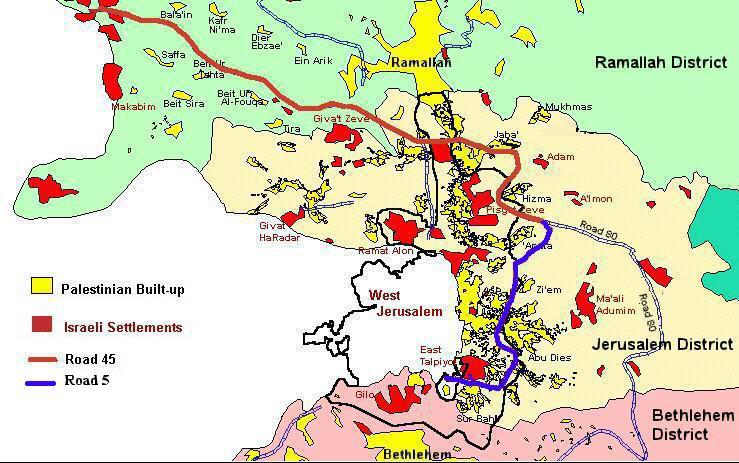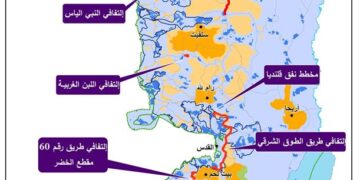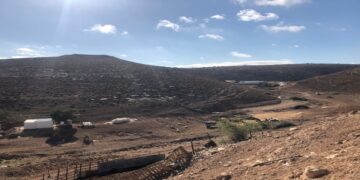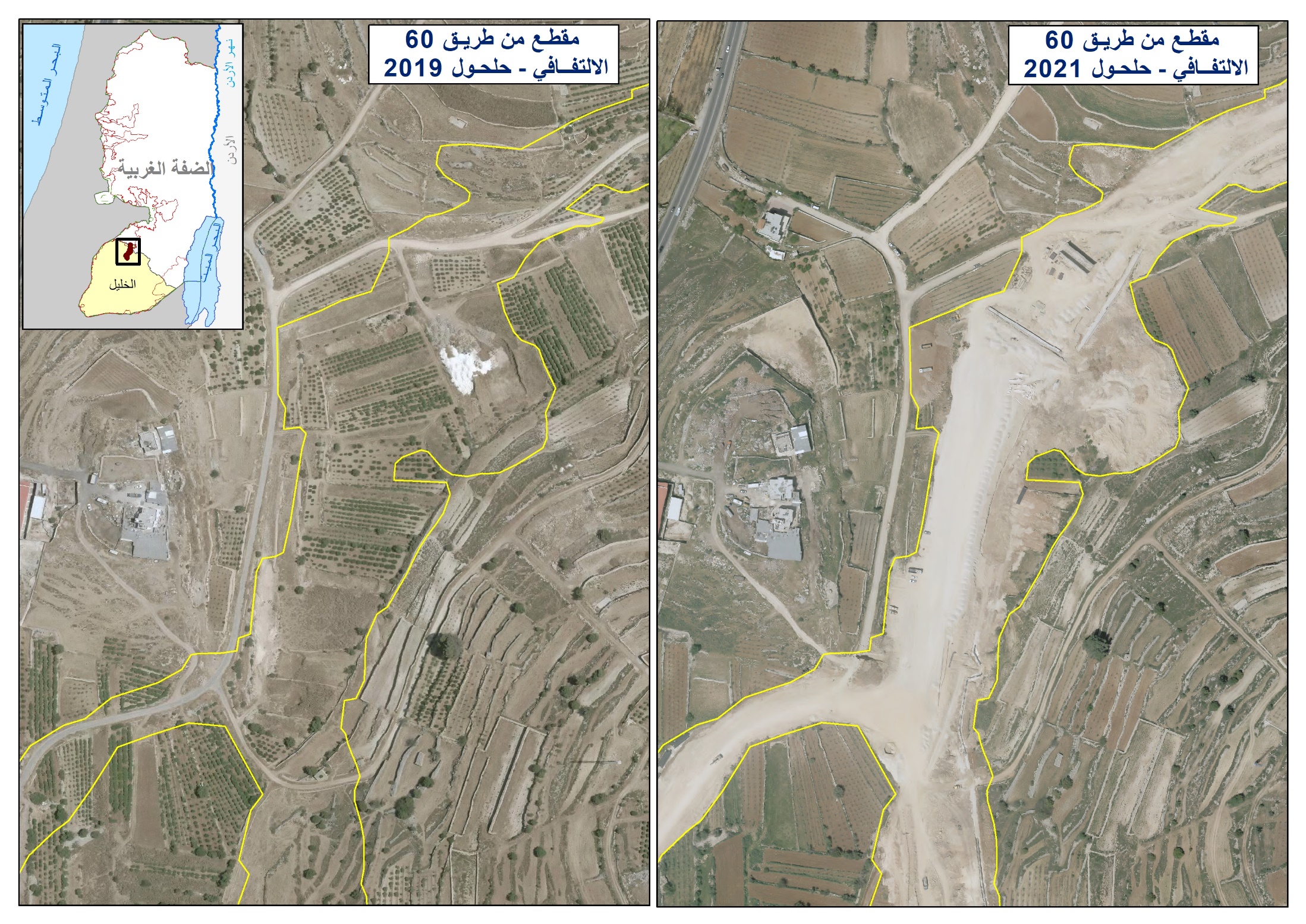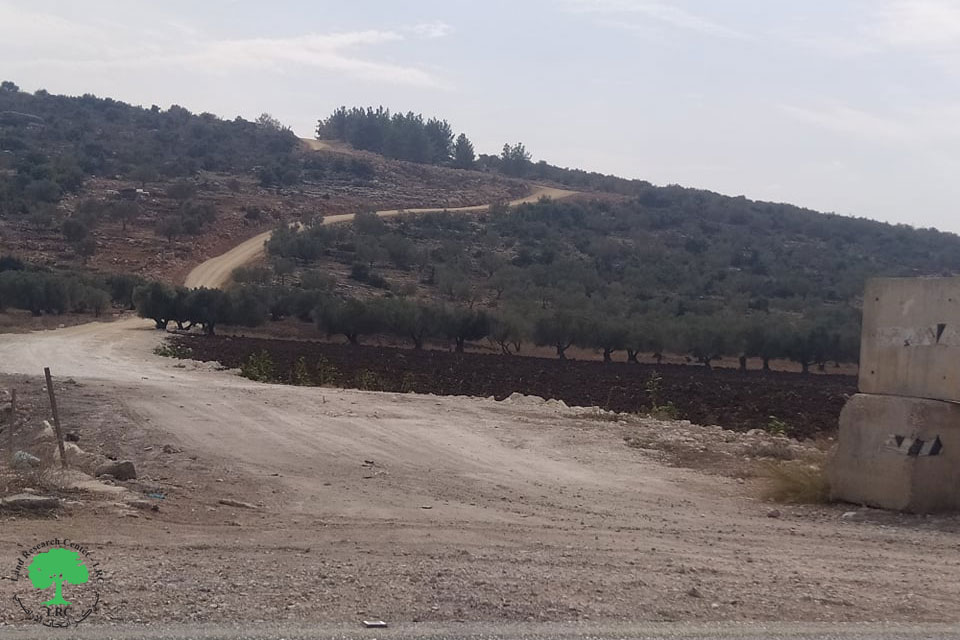In continuation with its plans to separate Jerusalem from the remainder of the West Bank, Israel has begun to implement a new project aimed at constructing a ring road around the city of Jerusalem. This road, consisting of Roads 45 and 5, will connect the Israeli settlements in the southern part of Jerusalem with those in the northern part, as well as connecting Jerusalem's settlements with the coastal area of Israel.
The ring road, according to the construction plans which were finalized by the Israeli Morieh company in 1996, originates from the main Hebron-Jerusalem road at the southern entrance of Talpiyot. It extends eastwards to reach El-Swahreh and El-Sharqiua village, passing through the northern edge of Sur Bahir. The road continues northwards until it crosses the Jerusalem-Ramallah road near the Jerusalem airport. This particular section of the road approximately follows the expanded East Jerusalem boundaries of 1967. The ring road further extends northwest, passing through agricultural lands from many Palestinian villages in the Jerusalem and Ramallah districts, to end at the Beit Shemen Junction in the coastal area of Israel near the Lod (Ben Gurion) airport (Map 1 and 2).
Map 1: The Planned Route of the Ring Road
Map 2: The Ring Road – from Aerial photos
The ring road, will connect with the proposed Har Homa Settlement (Abu Ghnaim) and with the Ma'ale Adumim settlement. It will also connects with the Jerusalem-Jericho and Jerusalem-Ramallah roads. The road plans also includes three tunnels, the largest of which is 1.8 kilometers in length which will pass under Abu Dies village, emerging near Zi'em village (Map 2a). A second tunnel will pass under the Jerusalem airport and connect with the main Jerusalem-Ramallah road (Map 2b).
According to construction plans, the ring road necessitate the demolition of approximately 38 Palestinian homes, all of which are located in the Es-Sawahreh Esh Sharqiua, Abu Tur and Abu Dies areas (Map 2c, Map 2d, Map 2e). The road, which will stretch approximately 45 kilometers in the West Bank including East Jerusalem, will result in the expropriation and destruction of over 700 hectares (1,750 acres) of Palestinian agricultural lands.
In addition to the extensive environmental damage, the ring road will create a new reality of political separation and territorial discontinuity. According to many Israeli Knesset members, the ring road is 'designed to prevent territorial contiguity between a number of Palestinian villages in the Ramallah area. In addition, it will also keep the Jerusalem neighborhoods of Neveh Ya'acov and Pisgat Ze'ev from being completely encircled -and, in a worst case scenario, cut off – by Palestinian villages and neighborhoods.' (The Jerusalem Post, Friday 21 February 1997).
The ring road will reserve large stretches of land for the expansion of Israeli settlements in Jerusalem, especially Pisgat Omer, Pisgat Ze've, and Neve Ya'acov. Approximately 153 hectares of land have been recently confiscated from the land of neighboring village of Anata for this purpose. It will also create a physical barrier to the contiguity of Palestinian towns and villages. Similar to the military fenced road that Israel is constructing north of Bethlehem city, the ring road may prevent Palestinians from traveling between Jerusalem and Ramallah. It will furthermore separate the villages and towns of Abu Dies, Hizma, Jaba', Mukmas, Zi'em, Qalandia, and Rafat from Jerusalem (Map 1).).
Roads 45 and 5 are only a part of an extensive Israeli road network that will physically encircle Jerusalem and separate East Jerusalem from the rest of the West Bank. The planned bypass road number 4 is another part of this network. Map 3 shows roads which are proposed and under construction in the Jerusalem area.

Map 3: Planned Roads in the Jerusalem Area (Map adapted from the Israeli Ministry of Information Homepage).
Prepared by:
The Applied Research Institute – Jerusalem


